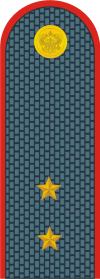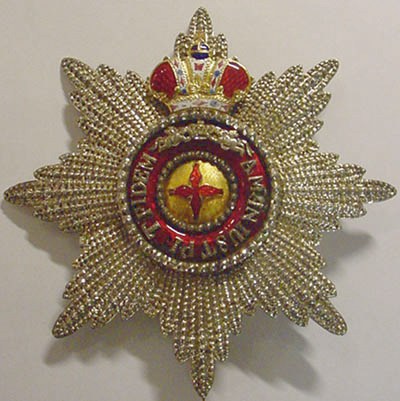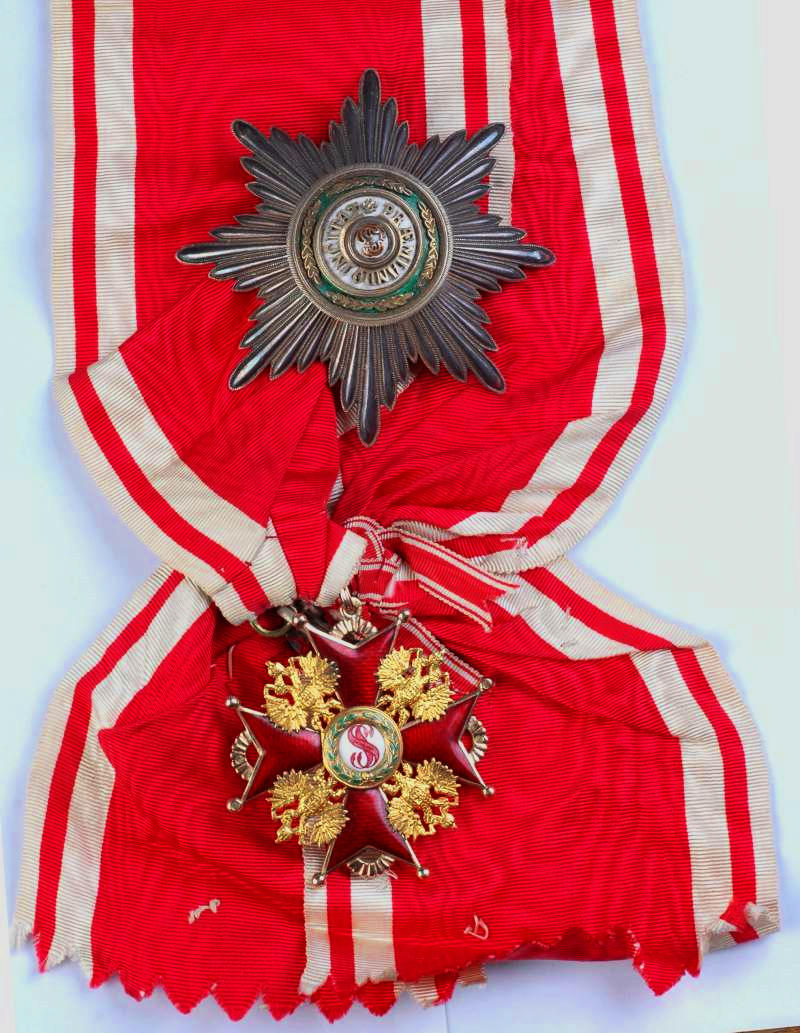|
Fyodor Radetzky
Fyodor Fyodorovich Radetsky (Radetzky in German; ; 1820–1890) was a Russian general of German- Silesian extraction. He founded the city of Krasnovodsk (modern Türkmenbaşy, Turkmenistan) in 1869. He commanded the Russian forces at the 3rd stage (September 13–17, 1877) and 4th stage (January 5–9, 1878) of the Battle of Shipka Pass. Military career *Non-commissioned officer: 1838 * Praporshchik: 1839 *Podporuchik: 1844 * Poruchik: 1845 * Stabskapitän: 1849 *Captain: 1850 *Colonel: 1857 * Major general: 1860 *Lieutenant general: 1868 * General of the Infantry (Imperial Russia): 1877 * Adjutant general: 1878 Awards * Order of St. Stanislaus, 3rd class (4.8.1845) * Order of Saint Anna, 3rd class with a bow (16.12.1852) * Order of Saint Anna, 2nd class with Imperial Crown (18.8.1855, Imperial Crown on 31.1.1859) * Order of Saint Vladimir, 4th class with a bow (4.10.1855) * Order of St. George, 4th class (8.9.1859) * Golden Checker "For Bravery", (10.5.1860) * Order of ... [...More Info...] [...Related Items...] OR: [Wikipedia] [Google] [Baidu] |
Saint Petersburg
Saint Petersburg, formerly known as Petrograd and later Leningrad, is the List of cities and towns in Russia by population, second-largest city in Russia after Moscow. It is situated on the Neva, River Neva, at the head of the Gulf of Finland on the Baltic Sea. The city had a population of 5,601,911 residents as of 2021, with more than 6.4 million people living in the Saint Petersburg metropolitan area, metropolitan area. Saint Petersburg is the List of European cities by population within city limits, fourth-most populous city in Europe, the List of cities and towns around the Baltic Sea, most populous city on the Baltic Sea, and the world's List of northernmost items#Cities and settlements, northernmost city of more than 1 million residents. As the former capital of the Russian Empire, and a Ports of the Baltic Sea, historically strategic port, it is governed as a Federal cities of Russia, federal city. The city was founded by Tsar Peter the Great on 27 May 1703 on the s ... [...More Info...] [...Related Items...] OR: [Wikipedia] [Google] [Baidu] |
Praporshchik
(, , ) is a rank used by the Russian Armed Forces and a number of former communist states. The rank is a non-commissioned officer's and is equivalent to in the corresponding navies. It is usually equivalent to warrant officer class 1 or sergeant major in English-speaking armies. Within NATO forces, the rank is rated as OR-7 or OR-8. Russia is a rank in the Russian military, also used in other uniformed services of the Russian government such as the police. It was a junior officer rank in Imperial Russia, but was abolished following the Russian Revolution. In 1940, the rank was restored as a separate career group between non-commissioned officers and officers. Imperial Russia was originally an Oberoffizer rank, as first introduced in Streltsy New Regiments. The name originates from Slavonic ''prapor'' (прапор), meaning flag; the ''praporshchik'' was a flag-bearer in Kievan Rus troops. In the New Regiments of the Streltsy and the "new army" of Peter the Great, '' ... [...More Info...] [...Related Items...] OR: [Wikipedia] [Google] [Baidu] |
Order Of Saint Anna
The Imperial Order of Saint Anna (; also "Order of Saint Anne" or "Order of Saint Ann") was a Holstein ducal and then Russian imperial order of chivalry. It was established by Karl Friedrich, Duke of Holstein-Gottorp, on 14 February 1735, in honour of his wife Anna Petrovna, daughter of Peter the Great of Russia. Originally, the Order of Saint Anna was a dynastic order of knighthood; but between 1797 and 1917 it had dual status as a dynastic order and as a state order. The Order of St. Anna continued to be awarded after the revolution by Grand Duke Kirill Vladimirovich, Grand Duke Vladimir Kirillovich, and Grand Duchess Maria Vladimirovna. Today, the Russian Imperial Order of St. Anna, awarded by Grand Duchess Maria Vladimirovna is recognized as an order of chivalry by the privately operated ICOC as a continuation of the pre-Revolutionary order, and has been approved for wear with military uniform by the Russian Federation, but not by some members of the Romanov Family Association ... [...More Info...] [...Related Items...] OR: [Wikipedia] [Google] [Baidu] |
Order Of Saint Anna Ribbon Bar
Order, ORDER or Orders may refer to: * A socio-political or established or existing order, e.g. World order, Ancien Regime, Pax Britannica * Categorization, the process in which ideas and objects are recognized, differentiated, and understood * Heterarchy, a system of organization wherein the elements have the potential to be ranked a number of different ways * Hierarchy, an arrangement of items that are represented as being "above", "below", or "at the same level as" one another * an action or inaction that must be obeyed, mandated by someone in authority People * Orders (surname) Arts, entertainment, and media * ''Order'' (film), a 2005 Russian film * ''Order'' (album), a 2009 album by Maroon * "Order", a 2016 song from '' Brand New Maid'' by Band-Maid * ''Orders'' (1974 film), a film by Michel Brault * "Orders" (''Star Wars: The Clone Wars'') Business * Blanket order, a purchase order to allow multiple delivery dates over a period of time * Money order or postal order, a ... [...More Info...] [...Related Items...] OR: [Wikipedia] [Google] [Baidu] |
Order Of Saint Stanislaus (House Of Romanov)
The Imperial Order of Saint Stanislaus (; ), also spelled Stanislas or Stanislav, is a Russian dynastic order of knighthood founded as '' Order of the Knights of Saint Stanislaus, Bishop and Martyr'' in 1765 by King Stanisław II Augustus of the Polish–Lithuanian Commonwealth. In 1831 after the downfall of the November Uprising, the order was incorporated into the Chapter of Russian Orders as part of the honours system of the Russian Empire by Emperor Nicholas I of Russia. In 1839, the Russian Order of Saint Stanislaus received new statutes, including granting status of nobility on its recipients in all three classes. As a result of the Russian Revolution 1917, activities were suspended by the Soviet Union, although it has since been awarded by the head of the Imperial House of Romanov as a dynastic order. When in 1918 Poland regained its independence as the Second Polish Republic, a Polish order was introduced as a successor to the Polish Order of Saint Stanislaus, the Orde ... [...More Info...] [...Related Items...] OR: [Wikipedia] [Google] [Baidu] |
Order Of Saint Stanislaus Ribbon
Order, ORDER or Orders may refer to: * A socio-political or established or existing order, e.g. World order, Ancien Regime, Pax Britannica * Categorization, the process in which ideas and objects are recognized, differentiated, and understood * Heterarchy, a system of organization wherein the elements have the potential to be ranked a number of different ways * Hierarchy, an arrangement of items that are represented as being "above", "below", or "at the same level as" one another * an action or inaction that must be obeyed, mandated by someone in authority People * Orders (surname) Arts, entertainment, and media * ''Order'' (film), a 2005 Russian film * ''Order'' (album), a 2009 album by Maroon * "Order", a 2016 song from '' Brand New Maid'' by Band-Maid * ''Orders'' (1974 film), a film by Michel Brault * "Orders" (''Star Wars: The Clone Wars'') Business * Blanket order, a purchase order to allow multiple delivery dates over a period of time * Money order or postal order, a ... [...More Info...] [...Related Items...] OR: [Wikipedia] [Google] [Baidu] |
General Of The Infantry (Imperial Russia)
General of the Infantry () was a general of the branch rank in the Imperial Russian Army (today comparable to OF-8 rank level). It served as the rank below '' General-feldmarschal'' (Russian: генерал-фельдмаршал), and was the highest rank one could achieve in the infantry from 1796 to 1917.Инфантерия (устаревшее итальянское ''infanteria'', от ''infante'' — «юноша, пехотинец»), название пехоты в вооружённых силах ряда зарубежных государств. В России в XVIII — начале XX веках термин «инфантерия» употреблялся в официальных документах наравне с термином «пехота». (ISBN т. 1 отсутствует. Привязано к: Декреты советской власти: �ноготомник М., 1957—1997.) History The rank was introduced by the Russian Emperor ... [...More Info...] [...Related Items...] OR: [Wikipedia] [Google] [Baidu] |
Lieutenant General
Lieutenant general (Lt Gen, LTG and similar) is a military rank used in many countries. The rank traces its origins to the Middle Ages, where the title of lieutenant general was held by the second-in-command on the battlefield, who was normally subordinate to a captain general. In modern armies, lieutenant general normally ranks immediately below general (or colonel general) and above major general; it is equivalent to the navy rank of vice admiral, and in air forces with a separate rank structure, it is equivalent to air marshal. In the United States, a lieutenant general has a three star insignia and commands an army corps, typically made up of three army divisions, and consisting of around 60,000 to 70,000 soldiers. The seeming incongruity that a lieutenant general outranks a major general (whereas a major outranks a lieutenant) is due to the derivation of major general from sergeant major general, which was a rank subordinate to lieutenant general (as a lieutenan ... [...More Info...] [...Related Items...] OR: [Wikipedia] [Google] [Baidu] |
Colonel
Colonel ( ; abbreviated as Col., Col, or COL) is a senior military Officer (armed forces), officer rank used in many countries. It is also used in some police forces and paramilitary organizations. In the 17th, 18th, and 19th centuries, a colonel was typically in charge of a regiment in an army. Modern usage varies greatly, and in some cases, the term is used as an Colonel (title), honorific title that may have no direct relationship to military. In some smaller military forces, such as those of Monaco or the Holy See, Vatican, colonel is the highest Military rank, rank. Equivalent naval ranks may be called Captain (naval), captain or ship-of-the-line captain. In the Commonwealth of Nations, Commonwealth's air force ranking system, the equivalent rank is group captain. History and origins By the end of the late medieval period, a group of "companies" was referred to as a "column" of an army. According to Raymond Oliver, , the Spanish began explicitly reorganizing part of thei ... [...More Info...] [...Related Items...] OR: [Wikipedia] [Google] [Baidu] |
Captain
Captain is a title, an appellative for the commanding officer of a military unit; the supreme leader or highest rank officer of a navy ship, merchant ship, aeroplane, spacecraft, or other vessel; or the commander of a port, fire or police department, election precinct, etc. In militaries, the captain is typically at the level of an officer commanding a company or battalion of infantry, a ship, or a battery of artillery, or another distinct unit. It can also be a rank of command in an air force. The term also may be used as an informal or honorary title for persons in similar commanding roles. Etymology The word "captain" derives from the Middle English "capitane", itself coming from the Latin Latin ( or ) is a classical language belonging to the Italic languages, Italic branch of the Indo-European languages. Latin was originally spoken by the Latins (Italic tribe), Latins in Latium (now known as Lazio), the lower Tiber area aroun ... "caput", meaning "head". It is consi ... [...More Info...] [...Related Items...] OR: [Wikipedia] [Google] [Baidu] |


